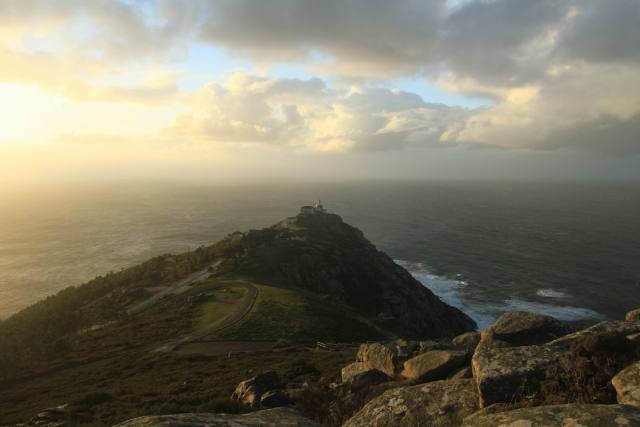We have arrived in the Finis Terrae, the last point of our route which has taken us along this rough and beautiful area of the coast. The view in front of us is astonishing and surprises us as it had done with the Romans and the pilgrims that have arrived at this point all along the History. Down our feet, the immense Atlantic Ocean is sailed by thousand vessels that every day go across this maritime corridor.
There, near the Cape Finisterre, the wreck with the highest number of ships involved and more victims took place in Galicia. In 1596, 8 years after the disaster of the Invincible Armada and after several seasons of British lootings all along our coast, Felipe II ordered the Second Invincible Armada set sail. From Cádiz, Seville and Lisbon, some galleons and small vessels set sail forming a fleet of more than 100 ships, commanded by Martín Padilla.
On October 28th, in 1596 in front of the coast of Finisterre, suddenly they found themselves in the middle of a strong storm that caused the wreck of 25 vessels. The total disaster: 1706 crew members remained buried under the waters of this sea that is the one who imposes its law. The number of casualties (Santiago de SM (307), Nave Anunciada (243), Angel Gabriel de Paulo Veira (174), David de Pedro Frías (163) gives us the idea of the immense tragedy. The rest of the vessels appeared in the different ports all along the North till Biscay.
As it has happened with all the wreck along the years, these vessels have suffered from lots of plundering that are not punished or controlled. From 1987, the writings by Manuel Martín Bueno and Miguel Sanclaudio give more details about the condition of these archaeological remains.
The lighthouse was built in 1853 to mark this geographic point, really important for the navigation. The octagonal tower made of stone measures 17 meters and its torch, placed 138 meters above the sea level, reaches further than 30 nautical miles. At first, it worked with oil lamps that were replaced with filament lamps that emit a flash every 5 seconds.
As there used to be a constant fog in winter, a building was built next to it with a siren in 1889, the Vaca of Fisterra (“the cow of Fisterra”), to warn the sailors against the dangers. On the days where the coast was covered with the fog, it emits a low pitched sound that can be heard further than 20 miles.
The building “Semáforo” (“traffic light”) was built in 1879 to emit signs to the Navy. Nowadays, after being rehabilitated, it is a small and peculiar hotel at the “end of the land”.
If we look towards the South, all the Ría of Corcubión, the islands of Lobeira and the imposing MountPindo complete the natural viewpoint.
And here, in the Finis Terrae of Decimo Junio el Bruto and the end of St. James´Way, is where O Camiño dos Faros finishes, the route that has taken us all along the Costa da Morte.
A Camiño dos Faros that goes along and across a lot of different landscapes, always looking at the sea and towards the West. Lighthouses, beaches, dunes, rivers, cliffs, estuaries with a great amount of birds, seas of granite, “castros”, dolmens, fishing villages, viewpoints overlooking the sea that breaks against the coast in many different ways, sunsets. In short, a unique hiking route that will take the hiker to a world of unique feelings that you can only enjoy along this Costa da Morte.



























